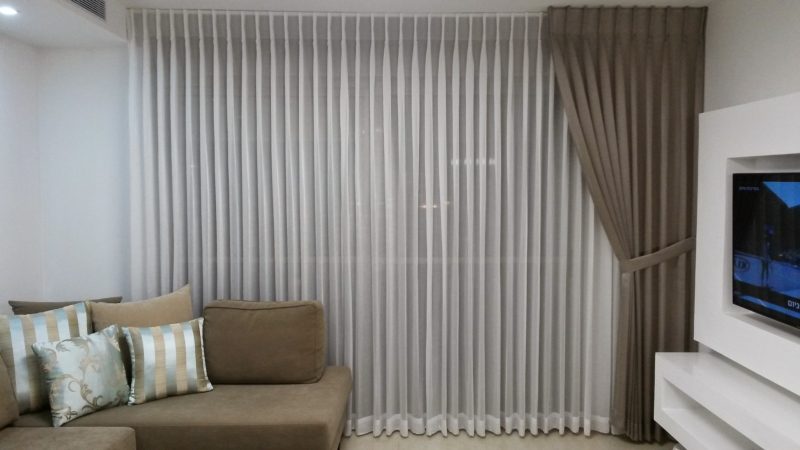Knowing how much fabric for curtains should you use is the first step to customizing your home’s window treatment. Whether you are up for a challenge or have developed a love for DIY projects, you always need to get into the basics first.

Obviously, you can’t skip the curtain-making process and head over to sewing the pieces right away. You will end up with improperly cut or measured curtain fabric that might be either too long or too short for your windows.
Measuring curtain fabric
The general rule in measuring curtain fabric is you have to base it on your windows. Your panels should be able to cover the entire width and length of the windows, multiplied by a fullness factor ranging from two to three.
In other words, the fabric has to be twice or thrice as wide as the window’s actual width, while the length depends on how long you want it to be. It would help if you also considered the height of your curtain rod and method of hanging since it will play a factor in your curtain’s overall length.
Before you head on to the store, it’s best if you sit down and get the dimensions straight. You want to avoid buying too much or too little fabric when making your own curtain. Since they sell material per yard, it’s better to buy nothing more than the necessary amount.
Step 1: Measure your window
As we said, the general rule is that curtains fabric measurements depend on your window dimensions. Take out your measuring tape and determine the width of your windows. You might also want to take note of the height between the window’s top edge and the rod and the height of your window’s bottom edge to the floor.
Step 2: Decide on the height.
To get the initial height of your curtain fabric, add the window’s actual length and distance from the rod. That should give you a standard short window length. If you want curtains ending just above the window sill, you can move on to step three.
For longer windows, decide how far below the window sill you want to go. In this example, we will calculate the length of a curtain fabric that ends an inch above the floor. Deduct one inch from the window-to-floor height measurement and add that value to the initial calculation.
Now, you should have the total length of your window panels that cover the curtain rod and fall all the way down until an inch above the floor.
Step 3: Compute the width.
Using the window’s width measurement that you acquired from step one, determine the fullness factor of your curtain. For standard fullness, use the fullness factor of two and three for maximum fullness.
Once you have determined your fullness factor, multiply it by your window’s actual width. Now you should have the required dimensions for the length and width of your curtains.
Step 4: Adjust the top.
As you should know by now, you can use multiple curtain hardware to hang your curtains. Each curtain hardware creates a different lengthening effect. For instance, curtain rings will add at least half an inch to your curtain’s overall length, so you might want to deduct that from the initial computed height.
Increase your curtain’s height measurement depending on the method of hanging. To make things easier, let’s compute for a rod-pocket curtain. Determine the circumference of the rod and measure how much fabric you would need to create the pocket. Add that to your fabric’s initial computed height.
Step 5: Add the seam allowances
By now, you should have your curtain’s total width and length, including fabric, to make the rod pocket. You should already have a draft idea of how much fabric for curtains you would need. The digits are close, but we are not exactly done.
Remember that we still need to hem the sides of our curtains. We will use the standard one-inch hemming on all sides. You can adjust the seam allowance of 1 inch if you think it’s too big or small.
For the side seams, multiple the 1-inch allowance by the number of panels you will make from the fabric. Remember that we will hem both sides, so multiply the number again by two. For the top and bottom hem, add seam allowances to the overall length (1 inch for the top and 1 inch for the bottom).
Summary
Remember always to check twice to ensure that you have your computations right. You should already have an exact measurement of the fabric that you will need to make your curtains.
Fabric retailers usually sell them by the yard, which is roughly 36 inches. Calculate the total inches you need and convert it to the nearest whole number in yards. Don’t be afraid to add a few extra inches, just in case.
You can also consult with the retailer regarding your window dimensions. If you are lucky enough, you will find someone who can help you find the sufficient amount of fabric that you will need. But it is always best that you know how to do it on your own.
Overall, determining how much fabric for curtains you need is highly dependent on the window you are covering. It also depends on the style that you want. Make sure to decide on the look and length you are going for before doing the measurements.
